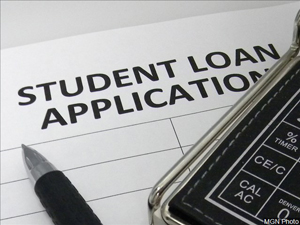Change in financial aid form can halt missed opportunities
By Nisa Islam Muhammad -Staff Writer- | Last updated: Dec 14, 2018 - 1:33:30 PMWhat's your opinion on this article?
WASHINGTON—Each year, the federal government gives more than $122 billion in aid to undergraduate students, helping more than 17 million of them go to colleges and universities.

|
The bad news is that every year, hundreds of thousands of low-income students also miss out on that aid because they fail to complete or verify the information on their FAFSA form, resulting in the worse completion outcomes than those students who receive consistent grant aid.
To help more students access federal aid, on November 26, the Center for American Progress (CAP) released a new report proposing a one-time FAFSA, where students would only be required to file when they first enroll in college.
“While lawmakers have taken some steps to simplify the FAFSA, they have mostly focused on the number of questions rather than the frequency of completing the form. This report shows that they should think bigger as we approach the reauthorization of the Higher Education Act,” said Colleen Campbell, associate director for Postsecondary Education at CAP and author of the report.
“This would open the doors of higher education to more students, reducing burden and making aid awarding more straightforward for the federal government, colleges, and students,” she said.
A one-time FAFSA would ensure that students could plan their college career with the confidence of knowing exactly how much aid they will receive from the federal government minus the headaches and complications of completing the yearly form.
“Unless you know exactly what you are doing the FAFSA can be like a maze,” Simone Anderson told The Final Call. She’s completed three for her children that are in college. “It has almost a 100 questions and you better have your income tax form handy when you are completing it. The FAFSA form wants to know how much income you make, how much you have in assets and how much you can contribute to your child’s college education.”
“The FAFSA is just the beginning. Then there is the mandatory verification. They don’t just take your word for whatever you say. You have to verify what you put on the form with the IRS. That’s where the trouble come in for some people. They don’t follow up with mandatory verification and they lose their financial aid.”
The CAP report used data from 27 colleges covering nearly 250,000 students. It found that half of all students who applied for financial aid experienced a change of $500 or less to their expected family contribution (EFC), the figure that determines their eligibility for need-based aid. Students who initially received a Pell Grant had EFCs that were even more stable, with 70 percent experiencing a change of $500 or less. Students with stable expected family contribution are prime candidates for one-time FAFSAs.
According to the report, a one-time FAFSA could only be implemented with a change to the Higher Education Act, something that could take years. However, the Department of Education could implement a stop-gap measure to simplify FAFSA reapplication and ease the path toward a one-time FAFSA.
INSIDE STORIES AND REVIEWS
-
-
About Harriett ... and the Negro Hollywood Road Show
By Rabiah Muhammad, Guest Columnist » Full Story -
Skepticism greets Jay-Z, NFL talk of inspiring change
By Bryan 18X Crawford and Richard B. Muhammad The Final Call Newspaper @TheFinalCall » Full Story -
The painful problem of Black girls and suicide
By Charlene Muhammad -National Correspondent- » Full Story -
Exploitation of Innocence - Report: Perceptions, policies hurting Black girls
By Charlene Muhammad -National Correspondent- » Full Story -
Big Ballin: Big ideas fuel a father’s Big Baller Brand and brash business sense
By Bryan Crawford -Contributing Writer- » Full Story






 Click Here Stay Connected!
Click Here Stay Connected!








